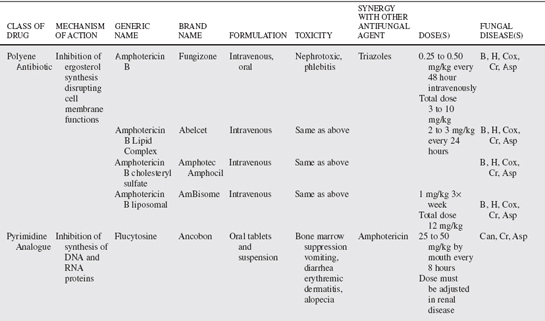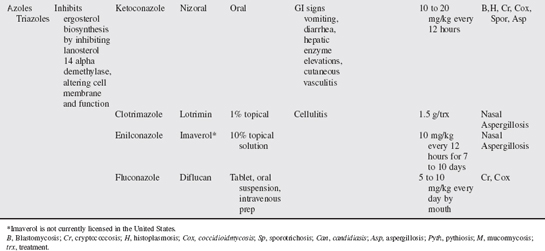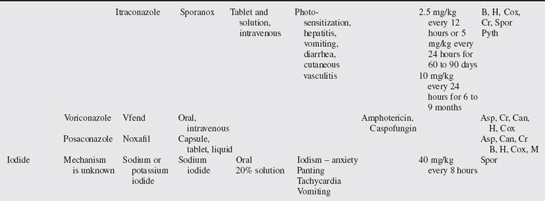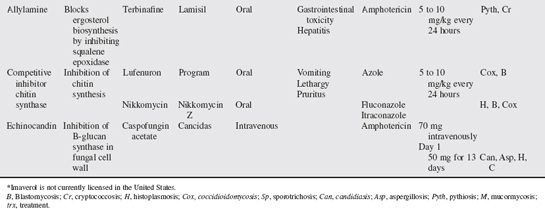68 Antifungal Therapy
1. What groups of compounds are commonly used in the treatment of fungal infections in the dog?
The major groups of compounds include natural agents such as griseofulvin, amphotericin B and its lipid formulations, and synthetic agents including iodides, pyrimidine inhibitor (flucytosine), azoles (ketoconazole, itraconazole, fluconazole, voriconazole), allylamine derivative (terbinafine), mannoprotein complexing agents, ergosterol synthesis blockers, and chitin/glucan synthetase inhibitors (lufenuron and caspofungin) (Table 68-1).
< div class='tao-gold-member'>
Only gold members can continue reading. Log In or Register to continue







